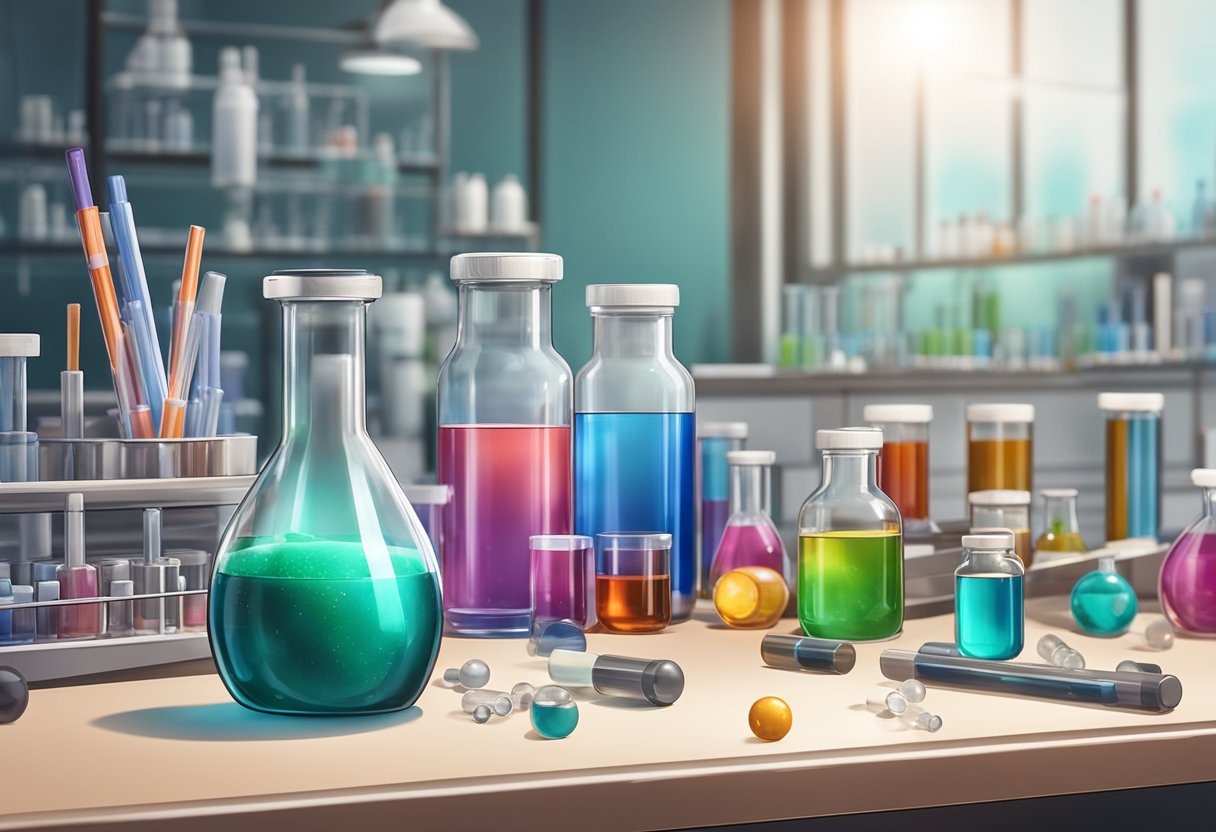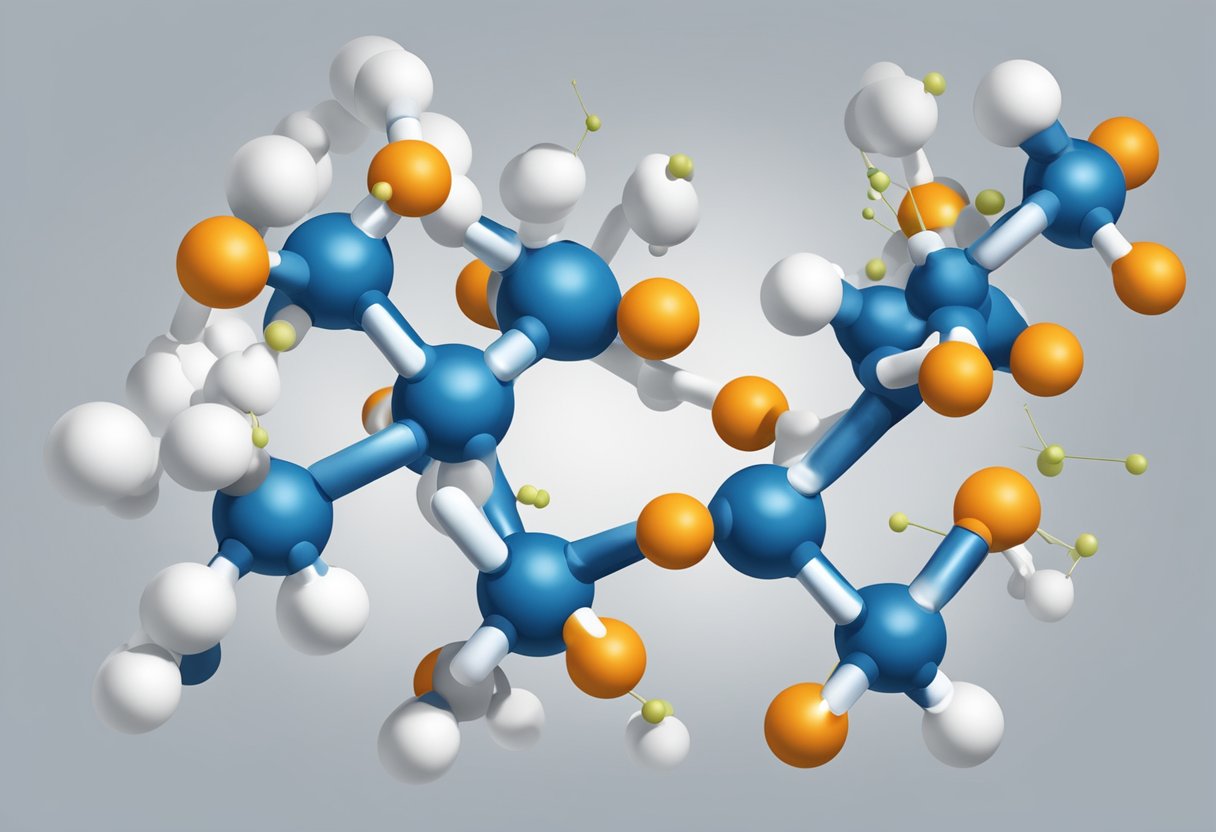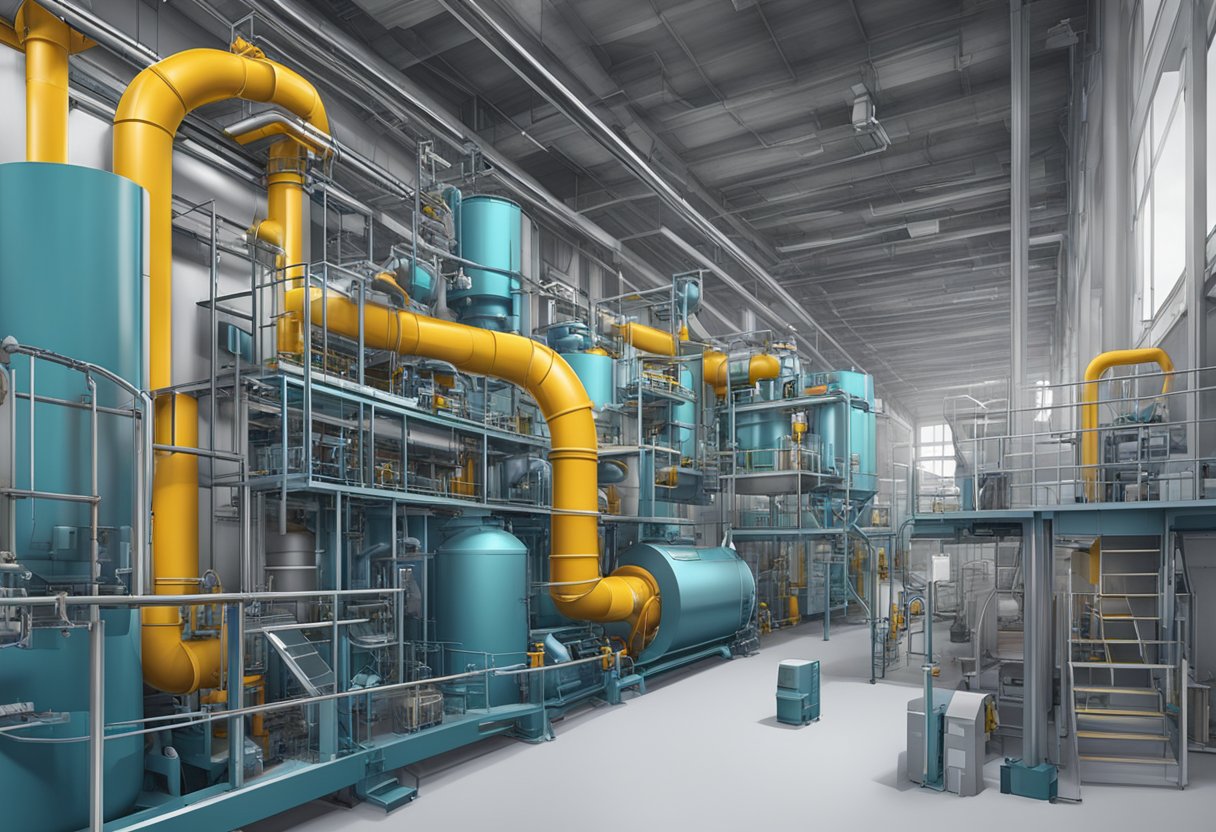Antioxidante TMQ: Benefits, Uses, and Side Effects
19/01/2024
Antioxidante tmq are substances that help protect the body from damage caused by harmful molecules known as free radicals. These molecules are produced naturally by the body as a result of normal metabolic processes, but they can also be generated by exposure to environmental toxins such as pollution, cigarette smoke, and radiation. Free radicals can cause damage to cells, proteins, and DNA, which can lead to a variety of health problems, including cancer, heart disease, and Alzheimer’s disease.

One type of antioxidant that has been receiving increased attention in recent years is TMQ, or tert-butylhydroquinone. TMQ is a synthetic antioxidant that is often added to food products to prevent spoilage and extend shelf life. It is also used in the production of rubber as a stabilizer. While TMQ has been shown to be effective at preventing oxidation and extending the shelf life of food products, there is some concern about its safety and potential health effects. As such, it is important to understand the benefits and risks associated with this antioxidant.
Chemical Structure of Antioxidante TMQ

Antioxidante TMQ, also known as 2,2,4-trimethyl-1,2-dihydroquinoline, is a synthetic antioxidant widely used in the rubber industry to prevent degradation of rubber products. The chemical structure of Antioxidante TMQ consists of a quinoline ring with two methyl groups and one tert-butyl group attached to it.
The molecular formula of Antioxidante TMQ is C12H15N, and its molecular weight is 173.26 g/mol. The compound is a pale yellow to amber liquid with a boiling point of 284-290°C and a flash point of 149°C. It is soluble in acetone, benzene, and toluene, and insoluble in water.
Antioxidante TMQ works by inhibiting the oxidation of rubber products, which can cause them to degrade and lose their physical properties. It does this by reacting with free radicals and other reactive species that are generated during the oxidation process. The compound has been found to be effective in preventing degradation of a wide range of rubber products, including tires, hoses, belts, and seals.
In summary, Antioxidante TMQ is a synthetic antioxidant with a quinoline ring structure that is widely used in the rubber industry to prevent degradation of rubber products. Its chemical properties and mechanism of action make it an effective and reliable antioxidant for a variety of applications.
Mechanism of Action

Antioxidant TMQ (2,2,4-trimethyl-1,2-dihydroquinoline) is a synthetic antioxidant that is widely used in the rubber industry. It is known to provide excellent protection against heat and oxidation in rubber compounds. The mechanism of action of TMQ involves the termination of free radical chain reactions that are responsible for the degradation of rubber.
TMQ acts as a radical scavenger by donating hydrogen atoms to free radicals, thereby stabilizing them and preventing further chain reactions. The antioxidant activity of TMQ is due to the presence of a phenolic group, which is responsible for the hydrogen atom donation. The antioxidant activity of TMQ is further enhanced by the presence of a bulky tertiary amine group, which provides steric hindrance and prevents the formation of reactive intermediates.
TMQ is effective in preventing the degradation of rubber by inhibiting the formation of peroxides and reducing the concentration of free radicals. It is also known to improve the aging resistance of rubber compounds by reducing the rate of oxidative degradation. The antioxidant activity of TMQ is influenced by various factors such as temperature, concentration, and the presence of other antioxidants.
In conclusion, TMQ is a highly effective antioxidant that provides excellent protection against heat and oxidation in rubber compounds. Its mechanism of action involves the termination of free radical chain reactions by donating hydrogen atoms to free radicals. The antioxidant activity of TMQ is due to the presence of a phenolic group and a bulky tertiary amine group, which provides steric hindrance and prevents the formation of reactive intermediates.
Industrial Applications

Rubber Industry
Antioxidant TMQ is widely used in the rubber industry as an effective and efficient antioxidant. It is used to protect rubber products from degradation caused by exposure to heat, oxygen, and other environmental factors. TMQ is particularly effective in preventing the formation of cracks and other forms of damage in rubber products. It is also used to improve the tensile strength and other mechanical properties of rubber products.
In the rubber industry, TMQ is commonly added to natural rubber and synthetic rubber compounds. It is typically added in small amounts, ranging from 0.5% to 2% of the total weight of the rubber compound. The addition of TMQ can significantly extend the service life of rubber products, making them more durable and reliable.
Plastics Manufacturing
Antioxidant TMQ is also used in the manufacturing of plastics. It is commonly added to polyethylene, polypropylene, and other plastic materials to protect them from degradation caused by exposure to heat, oxygen, and other environmental factors. TMQ is particularly effective in preventing the formation of cracks and other forms of damage in plastic products.
In the plastics industry, TMQ is typically added in small amounts, ranging from 0.1% to 0.5% of the total weight of the plastic material. The addition of TMQ can significantly improve the durability and reliability of plastic products, making them more resistant to environmental factors and extending their service life.
Overall, antioxidant TMQ is an important industrial chemical that provides valuable protection to rubber and plastic products. Its effectiveness and efficiency make it a popular choice for many different applications in the rubber and plastics industries.
Health and Safety Considerations
Antioxidant TMQ has been studied extensively for its potential health benefits, but it is important to consider the safety implications of its use. Here are some key health and safety considerations to keep in mind:
- Dosage: As with any supplement or medication, it is important to follow the recommended dosage guidelines. Taking too much antioxidant TMQ can lead to negative side effects, such as headaches and nausea. Always consult with a healthcare professional before starting any supplement regimen.
- Allergies: Individuals with allergies to rubber or latex may be more likely to have an allergic reaction to antioxidant TMQ, as it is often used in the production of rubber products. If you have a known allergy to rubber or latex, it is important to avoid antioxidant TMQ.
- Interactions: Antioxidant TMQ may interact with certain medications, such as blood thinners. It is important to inform your healthcare provider of any supplements you are taking to avoid potential interactions.
- Purity: When purchasing antioxidant TMQ supplements, it is important to ensure that they are from a reputable source and have been tested for purity. Contaminated supplements can be harmful to your health.
Overall, antioxidant TMQ can be a safe and beneficial supplement when used correctly. However, it is important to consider these health and safety considerations before adding it to your supplement regimen.
Environmental Impact
Antioxidant TMQ is often used in the rubber industry as a stabilizer to prevent degradation of rubber products. However, its use has raised concerns about its environmental impact.
TMQ is not biodegradable and can persist in the environment for a long time. It can accumulate in soil and water, potentially affecting the health of plants and animals.
Additionally, the production of TMQ requires the use of chemicals and energy, which can contribute to greenhouse gas emissions and other environmental impacts.
To mitigate these concerns, some manufacturers have implemented measures to reduce the environmental impact of TMQ production. These include using renewable energy sources and improving production processes to reduce waste and emissions.
Overall, while TMQ can provide important benefits in the rubber industry, its environmental impact should be carefully considered and managed to ensure sustainable use.
Regulatory Status
Global Regulations
Antioxidant TMQ has been approved for use as a food additive by the United States Food and Drug Administration (FDA) and the European Food Safety Authority (EFSA). It is also approved for use in various industrial applications, including rubber production, petroleum refining, and plastics manufacturing.
In China, antioxidant TMQ is regulated by the Ministry of Agriculture and Rural Affairs and the National Health Commission. It is approved for use as a food additive, but there are restrictions on the maximum allowable concentration.
Compliance Standards
In addition to regulatory approval, antioxidant TMQ must also comply with various industry standards and guidelines. The Joint FAO/WHO Expert Committee on Food Additives (JECFA) has established a maximum allowable daily intake (ADI) of 0-0.7 mg/kg body weight for TMQ.
Manufacturers of antioxidant TMQ must also comply with Good Manufacturing Practices (GMP) and Hazard Analysis and Critical Control Points (HACCP) guidelines. These ensure that the product is manufactured and handled in a safe and sanitary manner, and that any potential hazards are identified and controlled.
Overall, antioxidant TMQ is a widely used and regulated additive that has been deemed safe for use in food and industrial applications. Compliance with regulatory and industry standards ensures that the product is produced and used safely.
Synthesis and Production
Antioxidant TMQ (2,2,4-Trimethyl-1,2-dihydroquinoline) is a widely used rubber antioxidant that helps to protect rubber products from degradation caused by heat and oxygen. The synthesis of TMQ involves the reaction of 2,6-dimethylphenol with isobutylene in the presence of a catalyst such as aluminum chloride. The reaction produces 2,2,4-trimethyl-1,2-dihydroquinoline as the main product, which is then purified through a series of distillation and crystallization steps.
The production of TMQ involves several stages, including raw material preparation, reaction, purification, and packaging. The raw materials used in the synthesis of TMQ are 2,6-dimethylphenol and isobutylene, which are stored in separate tanks and fed into the reactor in a controlled manner. The reaction is carried out at a temperature of around 70-80°C and under pressure to ensure high yields of the desired product.
After the reaction, the crude product is purified through a series of distillation and crystallization steps to remove impurities and obtain a high-purity TMQ product. The purified TMQ is then packaged into bags or drums and stored in a cool and dry place until it is ready for use.
Overall, the synthesis and production of antioxidant TMQ is a complex process that requires careful control of reaction conditions and purification steps to ensure high yields of a high-quality product.
Market Trends and Demand
Antioxidants have become increasingly popular in recent years as consumers become more aware of the potential health benefits they offer. One such antioxidant is TMQ, which has gained significant attention due to its ability to prevent oxidation and extend the shelf life of products.
The demand for TMQ is expected to continue to grow in the coming years, driven by the increasing use of antioxidants in various industries such as food and beverage, cosmetics, and pharmaceuticals. In addition, the growing consumer preference for natural and organic products is expected to further boost the demand for TMQ, as it is derived from natural sources.
The Asia Pacific region is the largest market for TMQ, with China being the major producer and consumer of the antioxidant. The increasing demand for processed foods and the growing awareness of the benefits of antioxidants in the region are expected to drive the growth of the TMQ market in the coming years.
Overall, the market for TMQ is expected to grow at a steady pace, with increasing demand from various industries and regions. However, the high cost of production and the availability of alternative antioxidants may pose a challenge to the growth of the market in the long run.
Quality Control Measures
Antioxidant TMQ is a widely used additive in the rubber industry due to its effectiveness in preventing rubber from degradation. However, the quality of the antioxidant must be ensured to maintain its efficacy. Quality control measures are therefore implemented to guarantee that the antioxidant is of high quality and meets the required standards.
One of the quality control measures used is the determination of the purity of the antioxidant. This is done by analyzing the melting point and the ash content of the antioxidant. The purity of the antioxidant is crucial as impurities can affect its performance and cause adverse effects on the rubber.
Another quality control measure is the testing of the antioxidant for any contaminants. This is done by using gas chromatography and mass spectrometry. The presence of contaminants can affect the performance of the antioxidant and cause harm to the environment.
The antioxidant is also tested for its stability under different conditions such as temperature, light, and humidity. This is important as the antioxidant must remain stable to maintain its efficacy during storage and use.
In addition, the antioxidante tmq is subjected to performance testing to determine its effectiveness in preventing rubber from degradation. This is done by using different methods such as the OIT (Oxidation Induction Time) test and the RPA (Rubber Process Analyzer) test. The results of these tests are used to ensure that the antioxidant meets the required standards and is effective in its intended use.
Overall, the quality control measures implemented for antioxidant TMQ ensure that it is of high quality, effective, and safe for use in the rubber industry.
Future Developments in Antioxidants
As research on antioxidants continues, there are several potential future developments that may impact the industry. Here are a few possibilities:
- Natural Antioxidants: With the increasing demand for natural and organic products, there is a growing interest in developing natural antioxidants. This includes plant-based antioxidants such as polyphenols and flavonoids, which have been shown to have potent antioxidant activity. Natural antioxidants may offer a safer and more sustainable alternative to synthetic antioxidants.
- Synergistic Antioxidant Blends: Combining different antioxidants may result in a synergistic effect, where the combined antioxidant activity is greater than the sum of the individual antioxidants. This approach may lead to the development of more effective antioxidant blends that can provide greater protection against oxidative stress.
- Targeted Antioxidant Delivery: Antioxidants are most effective when they are delivered to the specific area of the body where they are needed. Targeted antioxidant delivery systems, such as nanoparticles or liposomes, may help improve the bioavailability and efficacy of antioxidants.
- New Antioxidant Sources: Researchers are constantly exploring new sources of antioxidants, such as algae, fungi, and bacteria. These sources may provide novel antioxidants with unique properties and applications.
- Antioxidants for Specific Applications: Antioxidants may have specific applications beyond their traditional use in food and cosmetics. For example, antioxidants may be used to protect materials from degradation, such as in plastics or coatings, or to improve the shelf life of pharmaceuticals.
As the field of antioxidante tmq continues to evolve, these and other developments may lead to new and innovative antioxidant products with a wide range of applications.
Alternatives and Substitutes
While TMQ is a widely used antioxidant in the rubber industry, there are some alternatives and substitutes available.
One such alternative is 6PPD (N-(1,3-dimethylbutyl)-N’-phenyl-p-phenylenediamine), which is also a widely used antioxidant in the rubber industry. 6PPD is effective in protecting rubber from oxidative degradation and has been shown to have less environmental impact compared to antioxidante tmq .
Another alternative is IPPD (N-isopropyl-N’-phenyl-p-phenylenediamine), which is similar to 6PPD in its antioxidant properties. However, IPPD has a lower melting point and is more soluble in rubber, making it easier to incorporate into rubber compounds.
Substitutes for TMQ include synthetic antioxidants such as BHT (butylated hydroxytoluene) and BHA (butylated hydroxyanisole). BHT and BHA are effective in preventing oxidation in rubber, but they may have adverse effects on human health and the environment.
It is important to note that each antioxidant has its own set of advantages and disadvantages, and the choice of antioxidante tmq will depend on the specific application and requirements of the rubber product.




